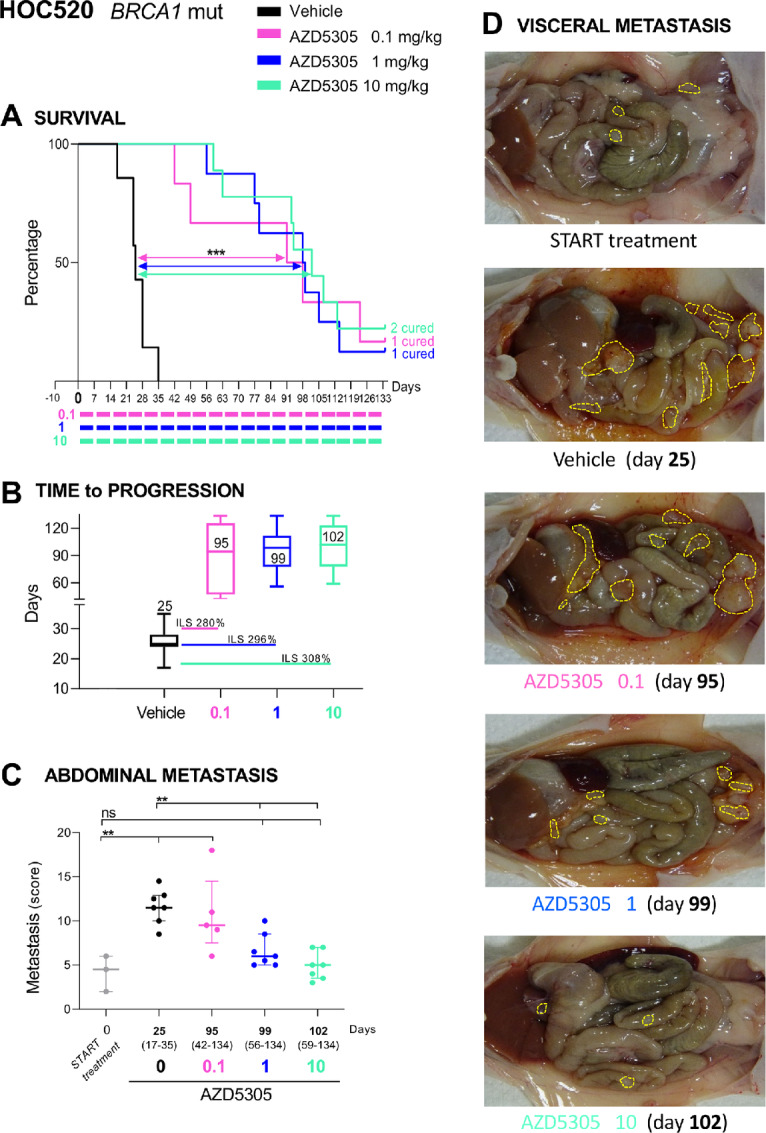FIGURE 2.

AZD5305 is active on orthotopically growing OC-PDX HOC520, resulting in significant impairment of visceral metastasis and prolonged lifespan of mice. A, Kaplan–Meier curves showing the percentage of survival plotted against time elapsed from treatment start. HOC520 OC-PDX–bearing mice were randomized (simple randomization) 10 days after transplantation to receive AZD5305 (0.1, 1, or 10 mg/kg) orally every day 5 days ON and two OFF in maintenance; colored bars indicate the dosing periods. Number of mice/group = 6–9. B, Time to progression (TtP). Median with range (days) for each treatment arm; increment of lifespan (ILS%) versus vehicle-treated group is also shown. TtP and ILS% were calculated as described in Materials and Methods. C, Abdominal metastasis. Metastatic dissemination (median with interquartile range; scattered points represent the metastasis score of each mouse) at the start of treatment (day 0, n = 3) and at disease progression (median with range TtP indicated on the X axis). D, Representative images of HOC520 visceral dissemination at start of treatments and at time of disease progression (25 days vehicles, 95 days AZD5305 0.1 mg/kg, 99 days AZD5305 1 mg/kg, and 102 days AZD5305 10 mg/kg). A–C, Statistical significance versus vehicle treated mice was analyzed as specified in Materials and Methods. ns, not significant; **, P ≤ 0.01; ***, P ≤ 0.005.
